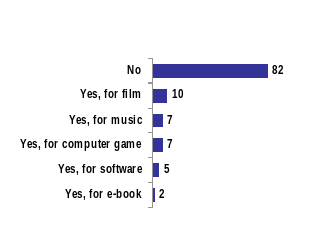WIPOACE84 PAGE 11 E WIPOACE84 ORIGINAL ENGLISH DATE OCTOBER
Wipoace84 Page 11 e Wipoace84 Original English Date October
WIPO/ACE/7/7 (in English)
WIPO/ACE/8/4
page
|
|
|
E |
Advisory Committee on Enforcement
Eighth Session
Geneva, December 19 and 20, 2012
SURVEYS ON CONSUMERS’ AWARENESS AND ATTITUDES IN RELATION TO COUNTERFEITING IN HUNGARY
prepared by Ms. Zita Tóth, Secretary, Secretariat of the National Board Against Counterfeiting, Hungarian Intellectual Property Office
INTRODUCTION
1 The National Board Against Counterfeiting (NBAC) in Hungary is a cooperative body addressing issues concerning the fight against intellectual property right infringements, and is involved in the elaboration and the implementation of action plans against counterfeiting. The NBAC was established in 2008 and embraces competent governmental institutions working in the field of intellectual property and its protection as well as market players and professional representative organisations involved in the protection of intellectual property. The Secretary of the NBAC is operated by the Hungarian Intellectual Property Office. The objective of the NBAC is the reduction of both the supply and demand side of counterfeiting. In order to learn the Hungarian consumers’ attitudes, opinions and behaviours related to counterfeiting, the NBAC conducted several consumer surveys. This document summarizes the results of the following significant surveys:
I. “Counterfeiting in Hungary“ consumer survey; and
II. Online survey on students' awareness and attitudes in relation to counterfeiting.
I. “COUNTERFEITING IN HUNGARY” CONSUMER SURVEY
2 NBAC was the first to initiate a nationwide representative consumer survey in connection with counterfeiting in 2009, which was – establishing a tradition – repeated in 2010, 2011 and 2012.1
3 While the first survey in 2009 focused only on consumer attitudes – by putting forth the conditional question “Would you buy a counterfeit product?” – the surveys in 2010, 2011 and 2012 included questions in respect of specific consumer purchases, reflecting actual practice vis-à-vis principles. In order to better understand the public opinion related to counterfeiting, the survey in 2011 was extended by including questions on the importance and originality of branded products, and also on the impact of the economical crisis. In 2012 new questions on the Internet users’ attitudes towards content under copyright protection were included.
4 According to the surveys the following conclusions can be drawn comparing the data of previous years when available.
(a) One-quarter of Hungarian consumers would be open to buy counterfeit products
A Chart
1: Would
you consciously buy counterfeit products (illegal, copied, of a
non-reliable source, illegally downloaded)? 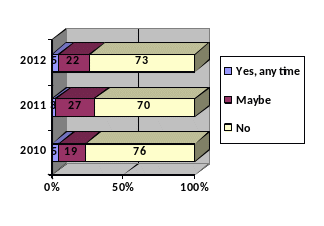
(b) Counterfeit clothes are the most popular
5 Compared to the previous year, the proportion of those who would “maybe” buy counterfeit products decreased in all the product categories examined in the research in 2012 (Chart 2). Of the surveyed product categories, counterfeit clothes are the most popular every year. This year half of the respondents, less than in the previous year, showed some willingness to buy new clothes illegally bearing trademarks; the other half of them definitely refused it. Similarly to the previous years, in the case of clothes consumers do not always regard non-original products as counterfeit. Although people may refuse to buy counterfeit products, clothing is still considered in a different way.
6 Most of the Hungarians would not buy perfumes, CDs/DVDs or computer programs of uncertain origin, and the proportion of those considering this kind of acquisition even decreased in 2012 (e.g., in the case of clothes by 8%, also by 8% in the case of perfumes, in the case of CDs and DVDs by 4%). At the same time, it is interesting that in respect of these products the proportion of those who would be ready to buy counterfeit products any time, without consideration, increased by 1-2% compared to the previous year.
7 The products having direct impact on health, that is, food and pharmaceuticals, represent a separate category. About 90% of the respondents definitely refuse to buy food and pharmaceuticals coming from a non-original source, therefore considered risky. This year the consumers had a stricter position in this respect compared to the previous year, in respect of both food and pharmaceuticals the proportion of those open to the purchase of products of uncertain origin decreased by 2%.
Chart 2: Would you buy counterfeit of the following products?
|
|
Yes, at any time |
Maybe |
No |
||||||
|
Product category |
2010 |
2011 |
2012 |
2010 |
2011 |
2012 |
2010 |
2011 |
2012 |
|
Clothes |
14 |
16 |
18 |
26 |
39 |
31 |
60 |
43 |
50 |
|
Perfumes |
8 |
8 |
9 |
17 |
26 |
18 |
75 |
65 |
72 |
|
CDs, DVDs |
9 |
6 |
8 |
15 |
22 |
18 |
76 |
70 |
72 |
|
Software |
7 |
6 |
7 |
13 |
19 |
14 |
79 |
71 |
76 |
|
Foodstuff |
2 |
2 |
2 |
6 |
10 |
8 |
92 |
87 |
89 |
|
Medicine |
1 |
1 |
1 |
4 |
6 |
4 |
95 |
92 |
94 |
(c) Young people are most open to the purchase of counterfeit products
8 The opinion polls also examined which social-demographic factors (age, place of residence, education) may influence the willingness to buy counterfeit products.
9 It has been a fact for years that the demand for counterfeit products decreases with the progression of age. In 2012, the willingness to buy illegal products slightly decreased in respect of all age groups; however, the young people are still the most open. While in 2010, 38% of the persons under the age of 30 showed interest, this proportion increased to 42% a year later, and it then decreased to 34% in 2012. This figure changed from 33% to 36% and then to 32% in 2012 in the case of persons between 30-45 years of age, and from 11% to 18% and then to 9% in 2012 in the case of persons over 60.
10 The younger someone is, the more likely he/she is to buy counterfeit CDs and DVDs. 43% of the young people (under 30), 31% of the young middle-aged people (between 30-45), 19% of the old middle-aged people (between 45-60) and 6% of the old people (over 60) are open to the purchase of counterfeit CDs and DVDs. Not surprisingly, age has a significant influence on the demand for copied and downloaded computer programs, too. The younger someone is, the more likely he/she would be open to such purchase. 36% of the young people, 26% of the young middle-aged people, 15% of the old middle-aged people and 3% of the old people are open to the purchase of copied and downloaded computer products.
11 The other important social-demographic index is the place of residence, that is, in addition to age the willingness to buy counterfeit or pirated products also depends on which region of Hungary and what kind of settlement the respondent lives in. In general it can be said that those living in the central part of Hungary (including the residents of Budapest) and in county seats are more open to the purchase of counterfeit products; in other regions and settlements the attitudes towards these products is rather fluctuating. The demand for food and pharmaceuticals of uncertain origin is much higher than the average among the residents of Budapest (food: average 10%, residents of Budapest 18%; pharmaceuticals: average 5%, residents of Budapest 9%).
12 It is interesting how education has an influence on the demand for counterfeit products. The demand for counterfeit clothes and perfumes is lower than the average among degree holders, while this group is more open to buy counterfeit CDs, DVDs and computer programs than the average.
(d) One-fifth of the consumers would download from illegal sources
13 With regard to the use of creative content, in addition to “traditional” piracy – realized in a physical form –, it was necessary also to examine questions regarding the online intellectual property right infringements in the survey.
14 The proportion of those not refusing to download movies, music and software from illegal Internet sources has decreased from last year’s one-fourth (26%) to one-fifth (19%) this year. Also in this category it is the younger generation that is primarily more active: 35% of people under 30 would acquire content from illegal sources. It is interesting that this index decreased in the past two years (it was 46% in 2010, then decreased to 40% in 2011). The surveys conducted in the previous years, broken down by regions, show that those living in Central Hungary represent a higher proportion than those living in other parts of Hungary. The differences between the genders are also significant: men are much more open to the download of content from illegal sources than women.
(e) 14% of Hungarian consumers bought counterfeit products last year
15 In addition to consumer attitudes, the research also queried about concrete acts. According to the results (Chart 3), 14% of the respondents bought at least once a counterfeit product in the previous year. 9% of the respondents did so several times, 5% only once. This proportion is higher by 1% in comparison to 2011, when 13% of the Hungarians acknowledged having bought a counterfeit product at least once in the year.
C hart
3: Did you buy counterfeit
(illegal, copied, acquired from uncertain source, illegally
downloaded) product in the past year?
hart
3: Did you buy counterfeit
(illegal, copied, acquired from uncertain source, illegally
downloaded) product in the past year?
2010 2011 2012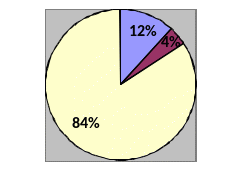
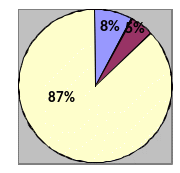
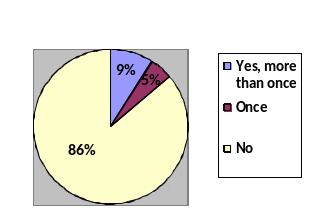
16 On the whole, it can be stated that on average the respondents bought nearly as many counterfeit products in 2012 as in the previous year. While clothes are still on the top of the list, there is a continuous improvement in this category: in 2010, 20% of the respondents, in 2011, 17%, in 2012, 15% admitted to the purchase of counterfeit clothes. Unfortunately, in the case of pharmaceuticals and food, the demand for the consumption of non-original products has increased (Chart 4).
C hart
4: Proportion of buyers of
counterfeit products broken down by product categories
hart
4: Proportion of buyers of
counterfeit products broken down by product categories
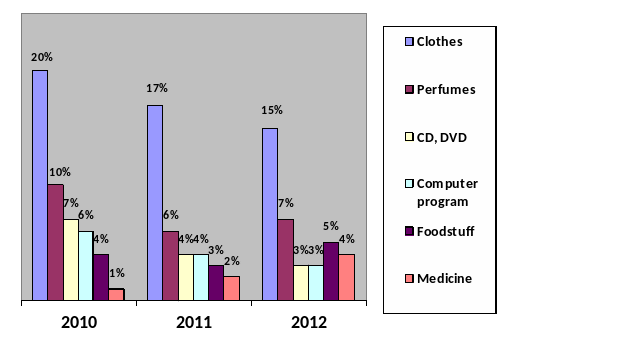
17 The residents of Budapest and young people are over-represented among those having bought counterfeit products several times in the previous year.
18 The main sources of counterfeit products are – according to the respondents – markets, streets and shops. The proportion of purchases on the Internet is remarkable in the product categories of perfumes, CDs, DVDs and computer programs. Illegally copied, downloaded computer programs and CDs, DVDs are often obtained from friends or acquaintances.
(f) Downloading from illegal sources is a popular method to obtain copyrighted content
19 In recent years, computers and the Internet have become part of the everyday life. Two‑thirds of the respondents use the Internet on a daily basis, and a quarter of the respondents connect to the Net several times a week. The frequency and features of surfing the Internet are closely connected to age and qualifications. A strikingly high user rate applies to the young (87%). In geographical terms, residents of Budapest (69%) and residents of county seats (66%) are the most active.
20 Among the Hungarian population, the most popular pirated content comprise music, followed by movies, software and digital books. According to the survey, it is generally true that those illegally downloading use this method more than once to obtain the wished-for content. 17 % of the Internet users indicated that they had listened to music on the Internet one or more times knowing that it was from an illegal source. 13% did so several times, while 4% only once. Music content from illegal sources was downloaded by 12% of the Internet users; 8% of the Internet users can be regarded as regular downloaders of pirated music. Movie content from illegal sources was downloaded by 11 % of the Internet users; 7% of the Internet users can be regarded as regular downloaders of such content. Software from illegal sources was downloaded by 5% of the Internet users, books from illegal sources were downloaded by 4% of the Internet users according to respondents.
21 The content from illegal sources are typically downloaded from the users’ homes, as four-fifth of them stated so. The other typical location is a friend’s home; this option was chosen by every fifth user. The proportion of workplaces is not negligible either, as 7% of the respondents mentioned having downloaded illegal content also at their workplaces.
22 It is an interesting question whether the downloaders were willing to pay for the available content: to this question only 11% of the respondents gave a clearly positive reply (Chart 5). A quarter of the respondents would only ”settle the bill” if the product could be purchased for a far lower amount than the current retail price. 43% of the respondents do not plan to pay at all as long as there are websites available where they can obtain certain content free of charge.
Chart 5: Would you be willing to pay for downloading content from a legal source on the Internet?


(g) Main motive for buying counterfeit products: lower price
23 When purchasing products, the Hungarian customers are not interested in brands; brands are not important at all to half of the respondents (Chart 6). Only one-fifth of the respondents look for a product bearing a certain brand name. They are typically young people, secondary school graduates or residents of the capital. Residents of the relatively poorer regions, those having no more than elementary school education, and old people show a below average interest in branded products. While in 2011 almost half of those in favour of branded products agreed that what they wear should be original, this ratio decreased to 40% in 2012. For almost one-third of them this continues not to be important. Residents of Central Hungary, the younger people and the degree holders attach the most importance to originality.
Chart 6
|
|
Agree |
Partly agree, partly don’t |
Do not agree |
Do not know |
|
It is important for me to wear branded clothes and shoes |
22% |
24% |
53% |
1% |
|
It is important for me that the branded product I wear be original |
40% |
27% |
31% |
2% |
24 The figures clearly show that Hungarian consumers buy counterfeit products due to their lower price and not for their quality. 60% of the Hungarian population think that original products obviously have better quality than counterfeits (Chart 7).
25 A decisive majority of the respondents (69%) think that in the long run it is more profitable to choose an original product. This proportion shows a 4% decrease in comparison to the previous year. Similarly to last year, this year it is again 9% who think that counterfeit products can compete with original ones.
26 Examining the motives behind purchasing illegal products, respondents support the assumption that such purchases primarily have financial motives, and due to the economic crisis, in all probability, more people are compelled to buy such products. Only 5% of the respondents cannot agree with this statement.
Chart 7
|
|
Agree |
Partly agree, partly don’t |
Do not agree |
Do not know |
|
Counterfeit products are as good in quality as originals |
13% |
23% |
60% |
4% |
|
In the long run it is more profitable to choose an original product |
69% |
20% |
9% |
2% |
|
Due to the economic crisis more people buy counterfeits or cheap products of uncertain origin |
73% |
18% |
5% |
4% |
(h) Most people are aware of the dangers of counterfeiting
27 The overall negative social perception of counterfeiting is supported by the fact that more than two-thirds of the Hungarian population keep their counterfeit purchases as a secret, and only 10% would boast of their good bargain. This year approximately the same proportion of the respondents is measured to be boastful or secretive, respectively, as last year. Among the older group, the ratio of those who boast of their counterfeits purchased for next to nothing is higher (13%) than the average (10%), while among the residents of county seats those who take pride in their good bargains are under-represented (7%).
28 Most of the people would need more information on the risks of counterfeiting. Compared to last year, the ratio of those who think that there is too little mention of the risks of counterfeiting in the public media decreased (52%). 19% of the respondents think that citizens get enough information on the risks of counterfeiting. It is the residents of cities and the degree holders who feel to be the least informed.
29 The survey has also revealed the difficulties in differentiating between illegal and legal content. One-fifth of the respondents agree that products posted on the Internet are distinguishable between legal and illegal. The proportion of those who cannot recognize with certainty legal products has stagnated in the past two years. If we only take into account those who have a clear opinion on the matter, we will see that it is about the same proportion of the respondents who can clearly differentiate between the original and counterfeit content, who cannot, and those who can only do so occasionally. Every third respondent, however, could not provide a reply to this question.
30 The consumers questioned are generally aware of the damaging impacts of counterfeiting on society and economy: 63% of the respondents know that counterfeiting causes serious losses to the public budget, while only 8% of the respondents disagree with this statement. It is mostly the residents of county seats or cities and the secondary school graduates who agree with the impact of counterfeiting on the public budget. Almost half of the Hungarian consumers believe that counterfeiting poses a threat to jobs, while less than one-fifth of the population think that counterfeiting has no impact on the job market, and 27% are uncertain about the matter. Young people under 30 years of age show a significantly higher (62%) awareness of the threat posed by counterfeiting to jobs than the average (53%), while old people above 60 years of age see this correlation to a lesser degree (48%). Compared to last year, the ratio of respondents who think that counterfeit products also pose a threat to consumers’ health has not changed. Last year, 67%, while this year 68% of the respondents held this opinion. The ratio of those rejecting the health risks of counterfeit products is 8%.
Chart 8
|
|
Agree |
Partly agree, partly don’t |
Do not agree |
Do not know |
|
Do you agree that possessing counterfeit products should not be kept secret but you can boast of it as a good deal? |
10% |
14% |
70% |
6% |
|
There is little mention of the risks of counterfeiting in the public media |
52% |
25% |
19% |
4% |
|
It is recognizable that movies, music or software content have been posted on the Internet by legal means. |
21% |
22% |
22% |
35% |
|
Counterfeits also cause damage to the public budget |
63% |
23% |
9% |
5% |
|
Counterfeits also pose a threat to jobs |
49% |
27% |
17% |
7% |
|
Counterfeits also pose risks to consumers’ health |
68% |
21% |
8% |
3% |
(i) Most people agree that counterfeiting should be penalized
31 More than half (58%) of the Hungarian consumers regard the manufacturing and distribution of counterfeits as a criminal offence. While the ratio of respondents who agree with the statement has shown fluctuation in the three years under examination, 14% still do not regard the sale of counterfeit products as an offence against law (Chart 9).
32 Most consumers would impose a more severe punishment on the counterfeiters and the distributors of counterfeits: this ratio has not changed in comparison to last year. The residents of county seats or cities and the degree holders are represented above average in favour of a more severe punishment, while those having no more than elementary school education and the residents of municipalities are represented below average.
33 Almost two-thirds of the respondents are of the opinion that by purchasing counterfeit products one supports organized crime, since it encourages the income growth of illegal manufacturers. The response to the question is primarily influenced by qualifications, as degree holders agree with the statement at a higher rate (75%) than the average (66%), while those having no more than elementary school education do so at a lower rate (58%).
34 Opinions differ markedly about placing the responsibility on the customers of counterfeit products. While in 2010 in Hungary, 36% of the respondents agreed with the possible introduction of legislation on punishment of customers of counterfeit products, last year this ratio was only 22%, but this year it has increased to 27%.
35 Similarly to last year, this year again 42% of the consumers think that severe sanctions can prevent people from buying counterfeits. In 2010 it was more than half of the respondents (53%) who thought so. This year, similarly to last year, every fourth Hungarian is sceptic about the matter. 29% of the customers cannot form a clear view on the matter.
Chart 9
|
|
Agree |
Partly agree, partly don’t |
Do not agree |
Do not know |
|
Anyone selling a counterfeit commits a crime |
58% |
24% |
14% |
4% |
|
Distributors of counterfeits should be punished more severely |
55% |
26% |
16% |
3% |
|
Organized crime earns profit from counterfeits |
62% |
21% |
10% |
7% |
|
Customers of counterfeits should also be penalized |
27% |
27% |
43% |
3% |
|
Severe legislation can deter people from purchasing counterfeit products |
42% |
29% |
25% |
4% |
36 A significant lesson to be drawn from the series of surveys made in the past four years is that although the fight against counterfeiting, carried out with the cooperation of the governmental and non-governmental sectors, has remarkable results in forming the attitudes and awareness, the demand for counterfeit products depends highly on the economic situation influencing welfare and prospects.
II. ONLINE SURVEY ON STUDENTS' AWARENESS AND ATTITUDES IN RELATION TO COUNTERFEITING
37 In
March-April 2011 the NBAC, with the support of the State Secretariat
for Education of the Ministry of Human Resources, conducted a
national survey in the Hungarian secondary schools, in which it
examined students’ knowledge and attitudes related to
intellectual property, especially, the online use of copyrighted
content and counterfeiting.2
The online questionnaire was filled out
by 17,435 students in 241 Hungarian secondary schools. Students
participated in the survey by type of settlement (Budapest, cities,
villages, municipalities) by region
(Central Hungary, West
Hungary, East Hungary), by age (14-16 years of age, 17-19 years of
age and above 18 years of age) and by gender (girls and boys) in
proper proportion to make an assessment and draw conclusions. Thus,
the result must reflect in all probability authentically all
secondary school students’ familiarity with, attitudes towards,
and opinion on, the topic.
38 The responses of the students have pointed out that despite their intensive use of the Internet, students lack even the basic knowledge of copyright related to everyday use. Assessing the results of the survey, the following most important conclusions can be drawn.
(a) Intensive use of the Internet
39 The Internet is an organic part of secondary school students’ lives, only 3-4% of them do not use it. On school days, more than half of the respondents (55%) spend 1-3 hours, 24%, however, more than 3 hours on the Internet. During the weekend, 48% use the Internet for more than 3 hours per day.
40 The Internet is primarily an interface for entertainment and social networking, and at the same time, an important source of obtaining content of interest, that is, of downloading. Music (85%) and movies (71%) are in the lead of sought‑after content, for boys, games and software are also important ”targets”.
(b) Downloading, file sharing, streaming
41 Nowadays consuming movies/music does not necessarily happen in a ”download-listen-watch” system, especially not in the case of girls or the younger group (between 14-16), where streaming type ”consumption” exceeds the classical way. The websites specializing in movie streaming services offer solutions to 80% of the movie watchers on the Net, while in making available streamed music, the YouTube type of services play a dominant part.
42 52% of the respondents download content on a regular basis. Among the downloading methods, torrent continues to be the most important (movies: 83%; music: 55% of respondents who download), but forums also offer downloading links to many (movies: 29%, music: 45%). According to the students’ responses, downloading is popular since it offers an extremely simple way to obtain content, the demand can be fulfilled immediately, and furthermore, it is free of charge and it can provide access to content that cannot be found in legal trade yet.
43 Asked about the consequences of using file‑sharing websites, students firstly mention the potential damage occurring to their own devices (virus, data loss, data theft); secondly, the loss to the producers/distributors of creative content; thirdly, the committing of a criminal offence. On the basis of a targeted question, three-quarters of the students regard the use of file‑sharing websites as illegal; however, this only prevents one-fifth of the students from file‑sharing. All in all, 18% of the respondents have already paid for some digital content available online (Chart 10); seven out of ten indicate that they do not plan to pay as long as there is a free alternative (Chart 11). All this happens despite the fact that 63% of the students think that musicians deserve money (royalty) for their successful songs. The intention to use legal sources as an ”attitude” appears in half of the students, a bit more typically with girls. 58% of the respondents consider it easy to identify legal content.
|
|
Chart 11: Would you be willing to pay for downloading content from a legal source on the Internet? |

(c) Insufficient knowledge of copyright
44 Almost
everybody uses the Internet to complete their homework with
more or less regularity: 93% of
the respondents answered that they get tasks at school for which they
use the Internet. As to the question on studying copyright,
one-sixth (17%) of the students responded that copyright was
mentioned at school; the overwhelming majority heard about copyright
in the framework of IT classes. 49% of the respondents already heard
about copyright, but not at school; 33%, however, stated that they
never heard about copyright. Lack of knowledge of
copyright is supported by the answers given to the questions related
to the judgement of certain ways of using authors’ works:
there is uncertainty in judging whether downloading movies, music
content from, or uploading content on, the Internet is lawful or not.
36% of the students think that uploading movies on the Internet is
lawful,
one-quarter also consider it lawful to post whole novels
scanned on the Net. 30% of the students believe that they can freely
copy and paste a text found on the Internet in their papers without
indicating its source.
(d) Counterfeiting is everywhere
45 Counterfeit products are palpable reality for students: 80% of them have already come across such clothes or shoes, and also in relation to other types of product, they have come across counterfeit products at a surprisingly high rate (perfumes 71%; toys 65%; electronic articles 56%; pharmaceuticals 22%). In their opinion, the main channels of commercialisation of counterfeit products are the markets and the Internet, the potential dangers of such products are well-known, like the fact that commercialisation of them constitutes a crime and causes damage to the right holder. Brands related to articles of clothing are not admittedly important for a small majority (53%): much more important for boys than for girls. The value increasing function of a brand is clearly recognized by 41% of the students. When wearing articles bearing well-known trademarks, the majority (57%) regard authenticity as important.
[End of document]
The views expressed in this document are those of the author and not necessarily those of the Secretariat or of the Member States of WIPO.
1 A representative sample of 1000 people has been surveyed by the TÁRKI Research Institute.
2 The results of the survey are available in Hungarian language on the NBAC’s website: http://www.hamisitasellen.hu/hu/system/files/HENT_felmeres_kozepiskolasok_2011.pdf
Tags: wipoace84, october, original, english
- FUNDACIÓ DE LES PELLÍCULES DE NO FICCIÓ I INICIS
- TALLER EN CLASES EJERCICIO CLÍNICA CREA EN LA BASE
- !doctype Html ![if ie 7]html Classie7 Welcome Langpl![endif]  INSTRUCTIONS FOR COMPLETING DHEC 2225 VOC EMISSIONS REPORTING FORM
INSTRUCTIONS FOR COMPLETING DHEC 2225 VOC EMISSIONS REPORTING FORM invitatie%20lucrare%20usa%20metalica
invitatie%20lucrare%20usa%20metalica АКРЕДИТОВАНА ЗДРАВСТВЕНА УСТАНОВА Д ЕЦЕМБАР 2016 ДЕЦЕМБАР 2023
АКРЕДИТОВАНА ЗДРАВСТВЕНА УСТАНОВА Д ЕЦЕМБАР 2016 ДЕЦЕМБАР 2023 VERBALE DI VERIFICA AMMINISTRATIVA E CONTABILE 1 ANAGRAFICA 2
VERBALE DI VERIFICA AMMINISTRATIVA E CONTABILE 1 ANAGRAFICA 2THE TEACHING AND LEARNING CIT RESOLUTION POINTS FOR ONLINE
 CAN10F LE CANADA DANS LE MONDE CONTEMPORAIN NOM
CAN10F LE CANADA DANS LE MONDE CONTEMPORAIN NOMKOMENTÁŘ KE ZMĚNÁM ZÁKONÍKU PRÁCE PLATNÝCH OD 112012 „NÁVRH
 Anexa nr 10 Model 2016 itl 010 nr de
Anexa nr 10 Model 2016 itl 010 nr de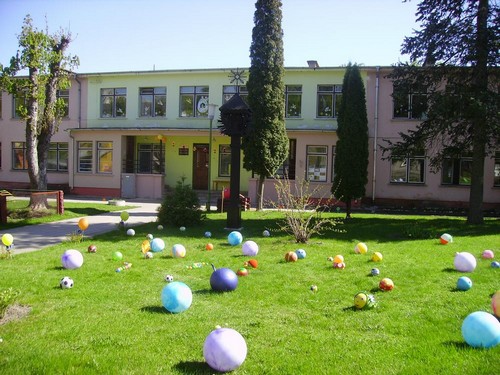 PANEVĖŽIO LOPŠELIO – DARŽELIO GINTARĖLIS“ IKIMOKYKLINIO UGDYMO PROGRAMA GINTARĖLYJE
PANEVĖŽIO LOPŠELIO – DARŽELIO GINTARĖLIS“ IKIMOKYKLINIO UGDYMO PROGRAMA GINTARĖLYJE REQUEST FOR ACCREDITATION OF MEDIA REPRESENTATIVES COP21 PERSONAL DATA
REQUEST FOR ACCREDITATION OF MEDIA REPRESENTATIVES COP21 PERSONAL DATA NURSING CARE QUALITY ASSURANCE COMMISSION NURSING EDUCATION PO BOX
NURSING CARE QUALITY ASSURANCE COMMISSION NURSING EDUCATION PO BOXEUROPA PARA DOS1 DESDE 2640 VISITANDO LONDRES CAMBRIDGE
 HERZLICH WILLKOMMEN BEIM FAMILIEN∙WEG∙WEISER FÜR DEN LANDKREIS HILDESHEIM! DER
HERZLICH WILLKOMMEN BEIM FAMILIEN∙WEG∙WEISER FÜR DEN LANDKREIS HILDESHEIM! DERRESOLUCIÓN GENERAL Nº 1282 SALTA 16 DE DICIEMBRE DE
 MEMBERSHIP APPLICATION FORM THE BJC BOASTS A LARGE AND
MEMBERSHIP APPLICATION FORM THE BJC BOASTS A LARGE AND CONTRATO PARA LICENCIA DE EXPLOTACIÓN DE PATENTE EN SANTIAGO
CONTRATO PARA LICENCIA DE EXPLOTACIÓN DE PATENTE EN SANTIAGO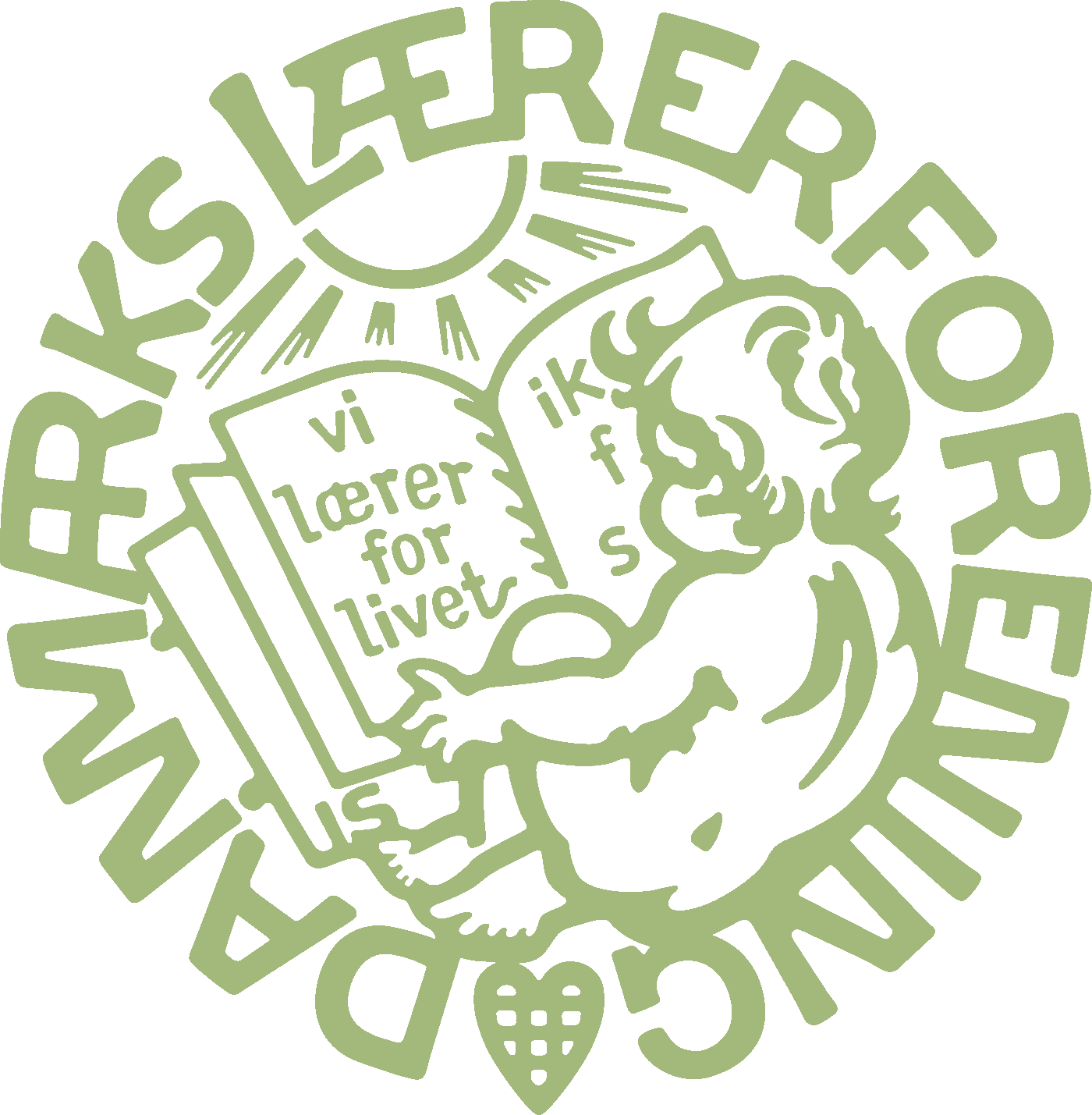 K ALUNDBORG LÆRERKREDS 21 OKTOBER 2015 HØRINGSSVAR VEDR LEDELSESMÆSSIG
K ALUNDBORG LÆRERKREDS 21 OKTOBER 2015 HØRINGSSVAR VEDR LEDELSESMÆSSIG PROTOCOLO DE EVALUACIÓN INICIAL DE LENGUA ESPAÑOLA Y LITERATURA
PROTOCOLO DE EVALUACIÓN INICIAL DE LENGUA ESPAÑOLA Y LITERATURAUNIVERSIDAD TECNOLÓGICA NACIONAL FACULTAD REGIONAL TUCUMÁN DEPARTAMENTO ELECTROTECNIA
IMPOUNDED COMMONWEALTH OF MASSACHUSETTS WESSEX SS MASSACHUSETTS APPEALS COURT

